While different organizations and industries all have their own unique approach to stockpile management, consistently keeping aggregate piles as full as possible is the one that’s especially pervasive. Many organizations feel that keeping as much inventory on hand as possible gives them the necessary options to deal with customer orders that can vary in volume and type from week to week and even day to day.
The problem with this approach is that it’s both inexact and represents a tremendous opportunity cost. Just keeping “as much as possible” of a given material without knowing exactly how much is there leads to inventory and fulfillment problems, while the opportunity cost associated with having a capital expense just sitting in a yard can be tremendous.Being able to automate the process for tracking stockpiled materials to enable real-time inventory has allowed organizations to address both of these issues, and it’s why many companies are working through whether or not it makes sense for them to build a drone program. The efficiencies such tools can represent have enabled profound changes for aggregate companies of all sizes, especially smaller ones that can’t completely dedicate resources to these sorts of initiatives or tools.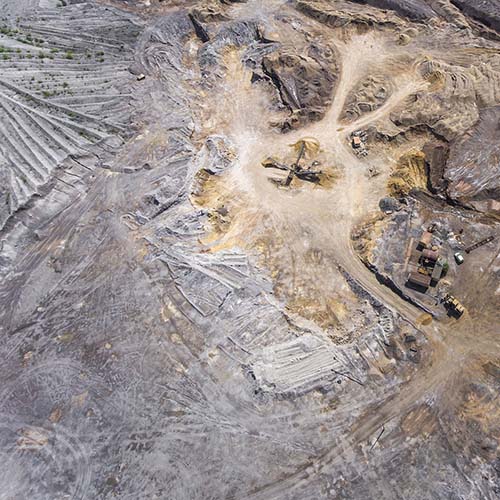 The Stockpile Management ModelIrving Materials, Inc. (imi) is a building materials supplier operating throughout the Midwest and the southern U.S. They have about 170 ready-mix concrete plants that produce the concrete in everything from sidewalks to airports to driveways. To create their product, imi utilizes limestone and sand-type materials that are stored as aggregated on-site, and the company very much fell into the mentality of keeping as much material on hand as possible.“We stuffed our bins as full as we could every day,” said Tyler Stanley, Production Manager at imi. “We'd have haulers bring in rock and stone and they stayed full. That was the game, because we didn't know how much we'd need and when. But then we started to realize that our stockpiles were getting out of control.”It got to the point where the back of certain stockpiles on imi sites wouldn’t get touched for years, and they literally had trees growing out of them. Not only does that represent wasted resources, but it also meant there was money on the ground that couldn’t be used for capital projects like buying trucks and upgrading plants. This approach prevented the company from establishing any sort of systematic management process to assess how much was really in these piles or how much more would need to be added to them.Recognizing these inefficiencies, the company was inspired by the automotive world’s just-in-time-manufacturing system, which is designed to reduce the time parts spend in the production system and improve response time to customers. imi searched for a solution that would provide them with a better understanding of how much material they had and would need, but their real goal was about much more than better control over their inventory.“The old method was to physically get out there and measure stockpiles with a tape measure, and that was both time-consuming and not exact,” Stanley told Commercial UAV News. “On top of that, every plant has a different plant manager and a different method of measuring a stockpile. No two people measure a pile the same way, and there are always chances for error or just a difference in measuring style. It's like two people trying to draw the same picture.”Moving away from this old stockpile management model required not only a shift of that mentality but also required the adoption of tools that could provide the company with a standard approach that could be scaled across their organization. Stockpile Reports and commercially available drones have been able to do both, in especially powerful and valuable ways.
The Stockpile Management ModelIrving Materials, Inc. (imi) is a building materials supplier operating throughout the Midwest and the southern U.S. They have about 170 ready-mix concrete plants that produce the concrete in everything from sidewalks to airports to driveways. To create their product, imi utilizes limestone and sand-type materials that are stored as aggregated on-site, and the company very much fell into the mentality of keeping as much material on hand as possible.“We stuffed our bins as full as we could every day,” said Tyler Stanley, Production Manager at imi. “We'd have haulers bring in rock and stone and they stayed full. That was the game, because we didn't know how much we'd need and when. But then we started to realize that our stockpiles were getting out of control.”It got to the point where the back of certain stockpiles on imi sites wouldn’t get touched for years, and they literally had trees growing out of them. Not only does that represent wasted resources, but it also meant there was money on the ground that couldn’t be used for capital projects like buying trucks and upgrading plants. This approach prevented the company from establishing any sort of systematic management process to assess how much was really in these piles or how much more would need to be added to them.Recognizing these inefficiencies, the company was inspired by the automotive world’s just-in-time-manufacturing system, which is designed to reduce the time parts spend in the production system and improve response time to customers. imi searched for a solution that would provide them with a better understanding of how much material they had and would need, but their real goal was about much more than better control over their inventory.“The old method was to physically get out there and measure stockpiles with a tape measure, and that was both time-consuming and not exact,” Stanley told Commercial UAV News. “On top of that, every plant has a different plant manager and a different method of measuring a stockpile. No two people measure a pile the same way, and there are always chances for error or just a difference in measuring style. It's like two people trying to draw the same picture.”Moving away from this old stockpile management model required not only a shift of that mentality but also required the adoption of tools that could provide the company with a standard approach that could be scaled across their organization. Stockpile Reports and commercially available drones have been able to do both, in especially powerful and valuable ways. 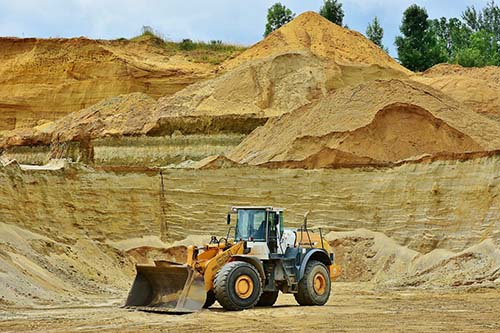 “People picked up on it very quickly”One of the challenges with integrating any new piece of technology revolves around what some have termed the “shiny object syndrome,” as it can be easy to get caught up in the excitement around tools like drones at the expense of legitimate questions about where they can add value. That value often starts with an assessment and exploration of exactly how that value is going to be created.“When Stockpile Reports measures, it's taking a volume and converts that into a 3D image,” Stanley explained. “We have to tell the Stockpile Report system how much that product weighs to actually get a tonnage, so we're converting a volume into a weight. That meant we had to do testing with our materials in order to figure out how we could get an accurate inventory count from the data.”This process is something that Stanley referred to as a “conversion factor”, and that variable changes for the company based on moisture content of their aggregates and exactly what materials they’re measuring. It’s the kind of nuanced detail that some skip over in their excitement to utilize the technology, but it’s where and how real value is created.These kinds of learning curves extend to changes in process as well, since the frequency of measurement can and should change based on the fact that people don’t have to go out to these piles to measure them. They also extend to the people that will be actually using these tools, both in terms of training and Part 107 certification, especially if using these tools will just be one aspect of their responsibilities and not their entire job. Thankfully for imi, these learning curve challenges were less difficult than they first appeared.“We had to get 10 employees certified under Part 107, and at first we were worried about whether or not they could do it because it’s not like flying a drone would be their only job,” Stanley continued. “People picked up on it very quickly though, and that wasn’t just for certification. We thought our stumbling block was going to be getting our employees trained on how to use this equipment, but it's flawless. I was expecting 2-3 crashes within the first week or two, but we haven't had anything happen.”The company utilizes commercially available drones with the Stockpile Reports full-service subscription, and the ease of use of these systems was essential in terms of how fast the company was able to adopt the technology and see it create value. That value is something they continue to recognize and measure in multiple ways.
“People picked up on it very quickly”One of the challenges with integrating any new piece of technology revolves around what some have termed the “shiny object syndrome,” as it can be easy to get caught up in the excitement around tools like drones at the expense of legitimate questions about where they can add value. That value often starts with an assessment and exploration of exactly how that value is going to be created.“When Stockpile Reports measures, it's taking a volume and converts that into a 3D image,” Stanley explained. “We have to tell the Stockpile Report system how much that product weighs to actually get a tonnage, so we're converting a volume into a weight. That meant we had to do testing with our materials in order to figure out how we could get an accurate inventory count from the data.”This process is something that Stanley referred to as a “conversion factor”, and that variable changes for the company based on moisture content of their aggregates and exactly what materials they’re measuring. It’s the kind of nuanced detail that some skip over in their excitement to utilize the technology, but it’s where and how real value is created.These kinds of learning curves extend to changes in process as well, since the frequency of measurement can and should change based on the fact that people don’t have to go out to these piles to measure them. They also extend to the people that will be actually using these tools, both in terms of training and Part 107 certification, especially if using these tools will just be one aspect of their responsibilities and not their entire job. Thankfully for imi, these learning curve challenges were less difficult than they first appeared.“We had to get 10 employees certified under Part 107, and at first we were worried about whether or not they could do it because it’s not like flying a drone would be their only job,” Stanley continued. “People picked up on it very quickly though, and that wasn’t just for certification. We thought our stumbling block was going to be getting our employees trained on how to use this equipment, but it's flawless. I was expecting 2-3 crashes within the first week or two, but we haven't had anything happen.”The company utilizes commercially available drones with the Stockpile Reports full-service subscription, and the ease of use of these systems was essential in terms of how fast the company was able to adopt the technology and see it create value. That value is something they continue to recognize and measure in multiple ways. 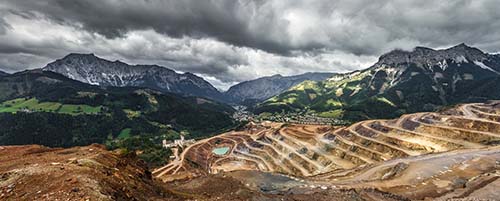 The difference of real-time inventory for stockpile measurementThe value that imi has been able to create by being able to keep capital available to spend on projects and materials they really need is considerable, but it’s value that can be specifically measured as well. The exact nature of the tools they’re using allows them to keep their suppliers honest and watch for trends when it comes to material loss, missing material, etc. That said, it’s the most basic uses of the technology that have enabled the biggest differences for the people who work in these environments on a daily basis.“I can’t overstate how valuable it is to give our team the data they need to know what materials they have on the ground,” Stanley said. “We have a schedule built out based on how much material we think we’re going to order, and now we can be exact when it comes to how much tonnage we have and how much we need of a certain material. Now that we know how many tons are on the ground, we know what we need to order to replenish that on the ground. We have a real-time inventory number to make those decisions, and that’s lightened the load for the entire team.”The safety implications of that lighter load are profound since the team no longer has to worry about injuries associated with the hazards of physically measuring a pile. Stanley mentioned that what used to take an hour for these types of measurements now takes ten minutes. The consistency and reliability of the Stockpile Reports solution has created efficiencies the company has quantified but still continues to discover.The real-time inventory model imi has pioneered is one that many in the ready-mix industry have recognized. They’ve proven the technology can make sense at a smaller scale, and doesn’t require an entire team or even a single resource that is dedicated to flying a drone. Anyone that needs to measure small or medium-sized stockpile quantities at multiple locations can look to the model imi has created to create similar value, although the approach around where and how they create that value is a key consideration.“The biggest thing for anyone looking at the adoption of this technology is to be open-minded about what you're saving or what your return is going to be,” Stanley concluded. “If you're thinking that your return is just going to be a tonnage number or you think that one number popping up is all you're going to be gaining by going to a system like this, you're selling the system short.”
The difference of real-time inventory for stockpile measurementThe value that imi has been able to create by being able to keep capital available to spend on projects and materials they really need is considerable, but it’s value that can be specifically measured as well. The exact nature of the tools they’re using allows them to keep their suppliers honest and watch for trends when it comes to material loss, missing material, etc. That said, it’s the most basic uses of the technology that have enabled the biggest differences for the people who work in these environments on a daily basis.“I can’t overstate how valuable it is to give our team the data they need to know what materials they have on the ground,” Stanley said. “We have a schedule built out based on how much material we think we’re going to order, and now we can be exact when it comes to how much tonnage we have and how much we need of a certain material. Now that we know how many tons are on the ground, we know what we need to order to replenish that on the ground. We have a real-time inventory number to make those decisions, and that’s lightened the load for the entire team.”The safety implications of that lighter load are profound since the team no longer has to worry about injuries associated with the hazards of physically measuring a pile. Stanley mentioned that what used to take an hour for these types of measurements now takes ten minutes. The consistency and reliability of the Stockpile Reports solution has created efficiencies the company has quantified but still continues to discover.The real-time inventory model imi has pioneered is one that many in the ready-mix industry have recognized. They’ve proven the technology can make sense at a smaller scale, and doesn’t require an entire team or even a single resource that is dedicated to flying a drone. Anyone that needs to measure small or medium-sized stockpile quantities at multiple locations can look to the model imi has created to create similar value, although the approach around where and how they create that value is a key consideration.“The biggest thing for anyone looking at the adoption of this technology is to be open-minded about what you're saving or what your return is going to be,” Stanley concluded. “If you're thinking that your return is just going to be a tonnage number or you think that one number popping up is all you're going to be gaining by going to a system like this, you're selling the system short.” 

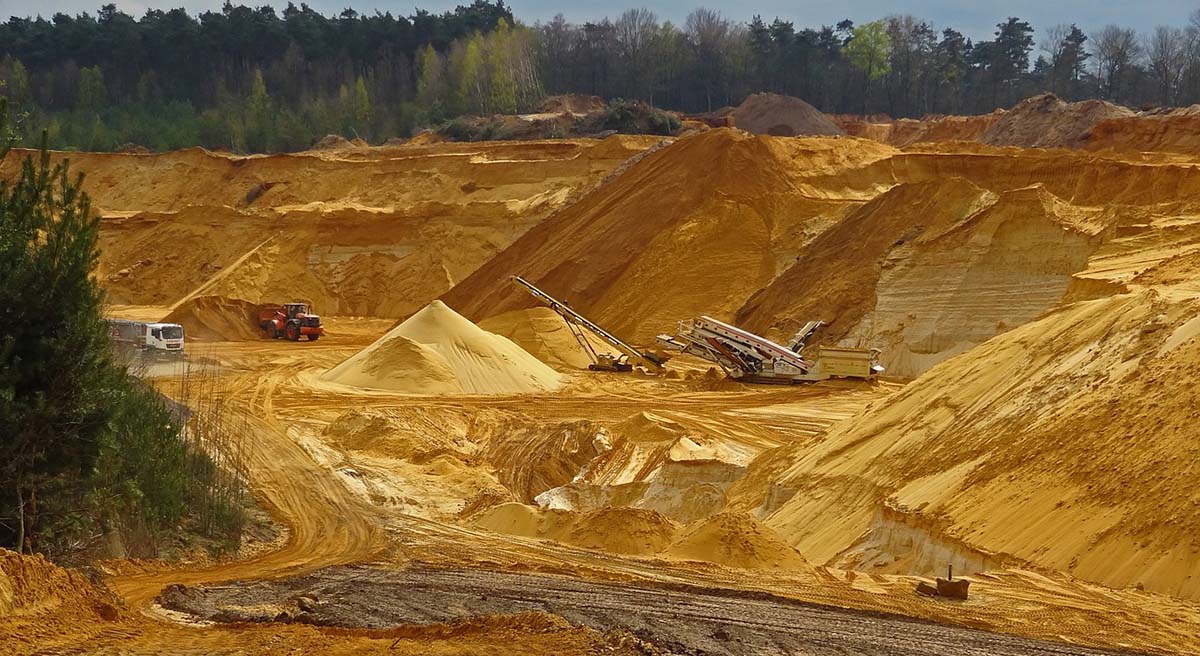


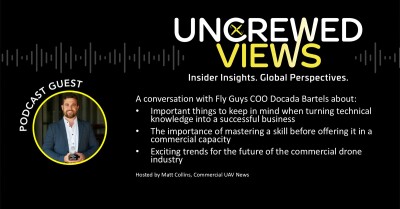










Comments